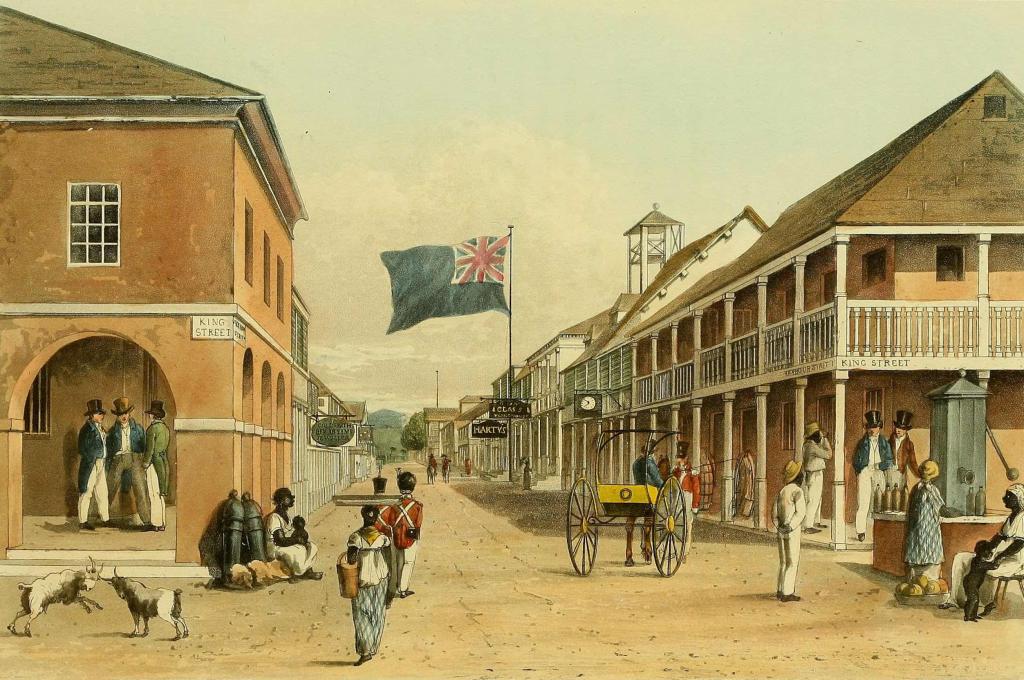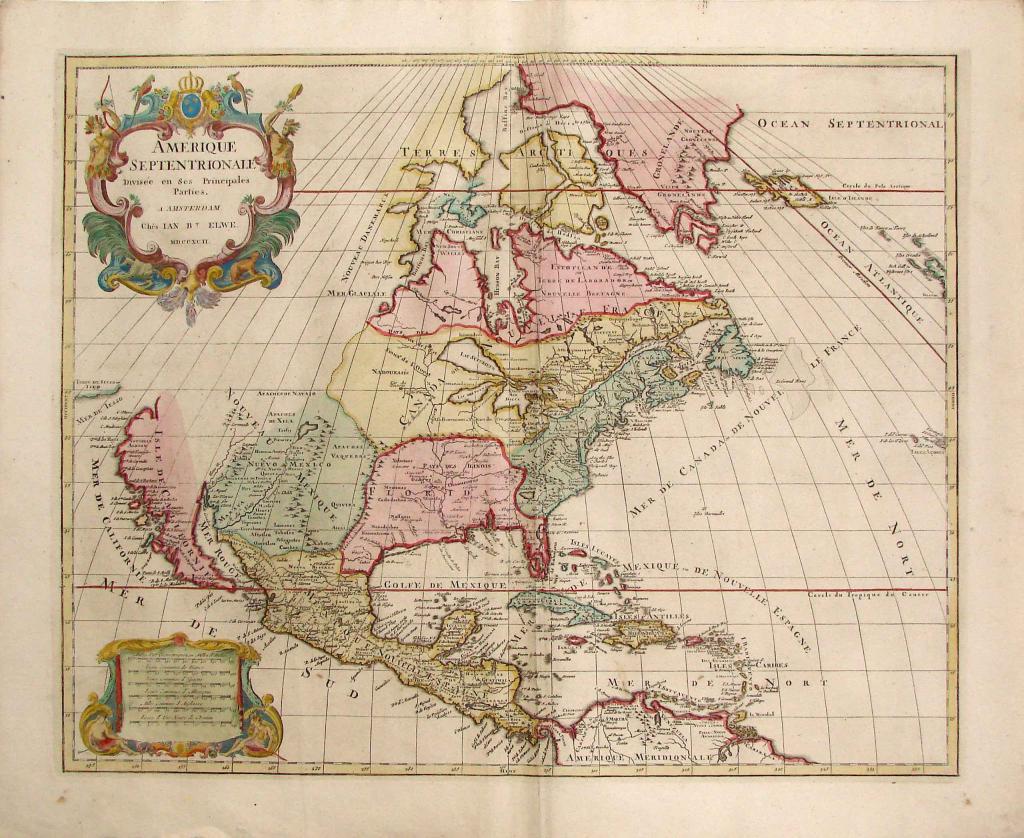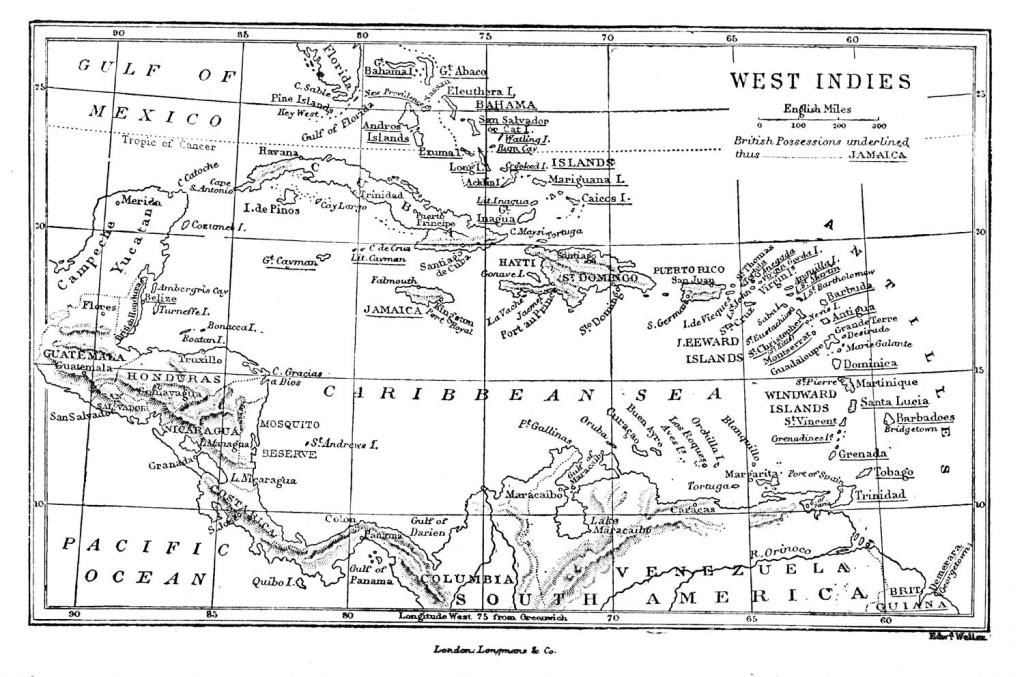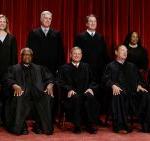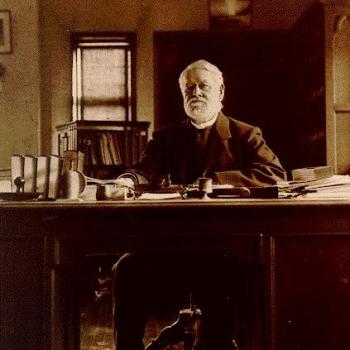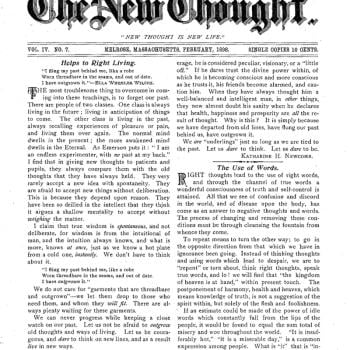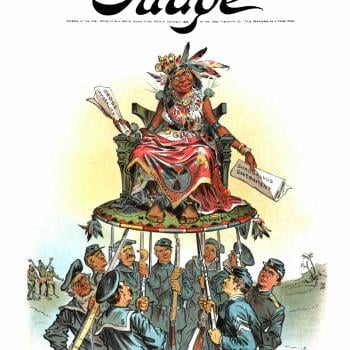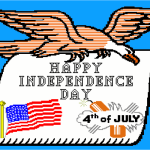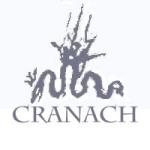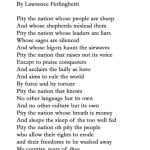Should students of American history be allowed to escape without taking a course or two on the Caribbean?
I have described the dangers of writing American history backwards, using the territory of the Lower Forty-Eight states as if these were the nation’s natural and predestined bounds, and were always intended to be. But throughout the colonial period, we must never forget that each of the great colonial empires on the North American continent was part of a much larger New World presence, and not necessarily the most important part. This can a painful lesson to learn, but is all but impossible to write or teach “American history” without looking south, into the Caribbean. This is a truth that historians of colonial and early national America have been internalizing over the past couple of decades.
For the Spanish of course, settlements like New Mexico and Florida were only a marginal component of a much larger transcontinental reality, but for the English, French, and Dutch also, their North American lands were seamlessly integrated into other imperial possessions, chiefly in the Caribbean. American historians are very familiar with the chronology of early settlement in their own territory, in which (for instance) the British settled Virginia in 1607, and between 1620 and 1640, they made their ventures into Massachusetts, Connecticut, New Hampshire, Maine, Rhode Island, and Maryland.
In terms of how governments and potential colonizers thought, it is essential to place these endeavors in context. In 1612, the British settled Bermuda, and between 1623 and 1632, they secured such key Leeward Islands as Saint Kitts, Nevis, Antigua, and Montserrat, as well as Barbados, all of which were at least as significant economically as any of the British mainland colonies. By 1650, the 44,000 white colonists in the British Caribbean possessions considerably outnumbered their counterparts in the Chesapeake region (12,000) and New England (23,000) combined. (This was shortly before the mass influx of African slave populations). That Caribbean emphasis grew during the years of political strife in Britain between 1640 and 1660, as governments dispatched many exiles and prisoners of war here, notably to Barbados. By 1700, Barbados alone had some seventy thousand residents, comparable to Virginia or Massachusetts, and larger than any other North American colony. Jamaica was not far behind with fifty thousand. Barbados demands special notice as the pioneering example of a plantation slave society in the British Empire.
Successive wars and treaties in the eighteenth and early nineteenth centuries gave the British a further series of plantation islands in the Windwards: Dominica, St Vincent, Grenada, and Tobago; and later, St Lucia, Trinidad, and (on the mainland) British Guiana and Demerara.
In these same years, the French were just as active in that very region. They settled Guadeloupe and Martinique (1635), and expanded steadily over the following eighty years. In 1697, they annexed from Spain the lands that would ultimately become Sainte Domingue, and eventually Haiti. In 1790, Sainte Domingue had a population of over half a million, more than any US state apart from Virginia.
With their thriving slave plantations, these Caribbean colonies became phenomenally rich, and politically crucial. During the treaty negotiations in 1763, the British agreed to restore to the French some of their overseas territories that they had lost in the recent war. The French had to choose between regaining Canada, or such tiny but profitable Caribbean islands as Guadeloupe and Martinique, and very rationally, they chose the islands. On the eve of the great slave revolt, Sainte Domingue alone was a boom economy on a stunning scale, supplying almost half the coffee and sugar consumed in Europe.
Purely as an intellectual exercise, I offer an intriguing might-have-been. Just suppose the British rather than the French had lost disastrously in the 1750s, and they had to choose between losing Barbados and giving up some North American colonies, like Massachusetts, or even the whole of New England. I wonder how much they might have been prepared to forfeit in order to hold on to the really valuable property?
During the epochal wars that decided the fate of the North American colonies, many of the most decisive campaigns were actually naval confrontations in the Caribbean. In terms of British imperial history in the New World in the seventeenth century, arguably the key event was the conquest of Jamaica in 1655, rather than anything that happened on the eastern coast of North America. In the eighteenth century, the reason the British did not lose more territory than they actually did after the American War of Independence was that they had won a stunning naval victory over the French and Spanish at the Battle of Les Saintes (1782), which occurred between Guadeloupe and Dominica. Beyond saving Jamaica, that victory made the ongoing peace negotiations very much more palatable for London. In the words of J. A. Froude, “So on that memorable day was the English Empire saved.”
As “everyone knows,” the thirteen British colonies in America rebelled in 1776, but that really is not true. It is sobering to recall that at this time, the British Empire mustered not 13 colonies in the New World, but 26. Besides the thirteen that became the United States, there were four others that ultimately joined Canada; also six in the Caribbean, namely Jamaica, Barbados, the Leeward Islands, Grenada and Tobago, St. Vincent, and Dominica. Add to those Bermuda, and the twin lands of East and West Florida, and you get 26 in all. Of those 26, then, just half rebelled. Among the key loyalists were those six really wealthy ones in the Caribbean. Bridgetown in Barbados was “the London of the West Indies.”
Today, if anyone thinks at all about the Caribbean dimension to early American history, it is likely because of Alexander Hamilton’s roots in Nevis in the Leewards, “a bastard, orphan, son of a whore and a Scotsman, dropped in the middle of a forgotten spot in the Caribbean”; but the whole region was critically important. Look for instance at Matthew Mulcahy’s Hubs of Empire, which “argues that it is useful to view Barbados, Jamaica, and the British Leeward Islands, along with the South Carolina and Georgia Lowcountry, as a single region. Separated by thousands of miles of ocean but united by shared history and economic interest, these territories formed the Greater Caribbean.” Barbadian elites were crucial to establishing the new colony of South Carolina. Mulcahy takes his title, by the way, from Eric Williams, who described the Caribbean as the hub of the British Empire.
My only problem with that approach is that we could just as equally extend that “Greater Caribbean” idea to other colonies, including Virginia. And what about the Rhode Island ports of Newport and Providence, which did so much business with Barbados, Jamaica, and Antigua, and was deeply invested in the slave trade? Shifting the focus only slightly into French-dominated realms, such a view makes wonderful sense for New Orleans, which looked to the French Caribbean, especially Sainte Domingue, and which retained that orientation long after it formally fell under US sovereignty.
As John Adams wrote in 1783, “The Commerce of the West India Islands, is a Part of the American System of Commerce. They can neither do without Us nor We without them.”
Throughout its history, the US has remained in dialogue with Caribbean nations and cultures, and that is especially true in the context of Black communities. An excellent database tells us that between the sixteenth century and the nineteenth, a total of 10.7 million African slaves arrived in the New World. Only a tiny number of those, around 3.6 percent, arrived directly in what we would call the US: many of those who ultimately came to British North America (and the new US) had been brought via one of those British Caribbean possessions, commonly Barbados.
REGION Slaves disembarked (thousands)
Brazil 4,864
British Caribbean 2,318
Spanish Americas 1,293
French Caribbean 1,120
Dutch Americas 445
Mainland North America 389
Danish West Indies 109
Coincidentally, the total number of slaves disembarked in Barbados alone was about the same as the figure for the whole of British North America, some 387,000.
Nor did those Africans alone constitute the whole of this massive trade. Just to take one individual, remember Tituba, the slave at Salem whose folk magic practices helped detonate the panic there in 1692. Her origins were probably Native American, rather than African, but nevertheless, she had been imported from Barbados.
That British Caribbean link remained true in later eras. Just to take some celebrities in Black American history, Marcus Garvey was Jamaican, as were the parents of General Colin Powell, who should have been the first Black US President. Claude McKay was Jamaican. Malcolm X’s mother (a Garveyite activist) was Grenadan. Shirley Chisholm, the most consequential Black woman in twentieth century American politics, was Barbadian. The Bahamas produced James Weldon Johnson (“Lift Every Voice and Sing”), Bert Williams, and Sidney Poitier. As for the French Caribbean, the revolution in Sainte Domingue had an explosive effect on slaves across the US, and was often cited as a factor driving revolts.
American Jewish history also has strongly Caribbean roots. Many Jews of Iberian origins settled in the British or Dutch East Indies, where their faith was tolerated, before eventually moving to North America. The Rhode Island congregation that emerged in the seventeenth century had West Indian roots: they are commemorated in Newport’s Touro Synagogue, the oldest in the US.
Just on a personal note, I teach at Baylor University, which stands in Waco, Texas. Fundamental to Waco’s early history was the land agency of the (Jewish) De Cordova family, who laid out the city in the 1840s. They also compiled one of the most important maps of early Texas. So where did they come from?
Jacob Raphael de Cordova was born in Spanish Town (near Kingston), Jamaica, on 6 June 1808, the youngest of three sons of Judith and Raphael de Cordova, a coffee brewer and grower, who were British Jews of Spanish descent. … In 1834, Jacob moved back to Kingston, where he and his brother Joshua started a newspaper, The Gleaner, which is still published today.
Jacob then moved to newly independent Texas, living variously in Galveston and Houston. The Gleaner, by the way, is still a cherished Jamaica institution.
Beyond human migration, biological forces paid equally little attention to human-enforced borders. Even into the twentieth century, much of the US South was closely analogous to the Caribbean in terms of its vulnerability to hot-weather diseases such as Yellow Fever, and such phenomena have to be studied across national boundaries.
Such an approach should even affect the way we present maps in our history books, always being careful to included those Caribbean lands, and not simply to draw a convenient line at Key West.
Among other things, this was where the emerging United States saw its future potential region for building and expanding its empire. We know about the US attempts to replace Spain in its Caribbean possessions, which culminated in the war of 1898, and the annexation of Puerto Rico. But we often forget the long-simmering rivalry with the British Empire in that area, which repeatedly came close to open warfare.
One crisis erupted around 1841. American slaveholders were incandescent over the British decision to end slavery in their Caribbean colonies in 1833, and many were actively demanding war. See Matthew Karp’s This Vast Southern Empire: Slaveholders at the Helm of American Foreign Policy. I quote a review of Karp by David S. Reynolds:
Georgia congressman Thomas Butler King, denouncing England for freeing its slaves in the West Indies, declared that “we might expect war—war to the knife—war with all her thunder.” James Henry Hammond of South Carolina wanted to “send a strong squadron” to police the British navy. Abel Upshur considered war inevitable and said that the only question was “where and by whom shall these battles be fought”—whether by the navy at sea or by the army on land. The naval officer and engineer of southern forts William Henry Chase predicted “a great naval battle in the Gulf of Mexico or the Caribbean Sea” to combat “the policy of England and the abolitionists” who were dead set on emancipation in Cuba and the rest of “the slave islands of West Indies.”
Specifically, they feared that the British might invade the American South, using an army of tens of thousands of Black soldiers, with the goal of detonating an apocalyptic slave revolt. This was the time of the Oregon Crisis of 1839-42, when the US was furiously devising contingency plans for war with Britain. Scarcely less frightening (and just as forgotten) was the crisis of 1895, when the British were pressing hard against Venezuelan territory. Throughout, the critical stumbling blocks that the Americans faced to expanding their power were the key British naval bases at Halifax and Bermuda.
Through much of the early twentieth century, the US regularly invaded and occupied many small states in the Caribbean region and in practice exercised full-fledged rule, although never formally incorporating such regions as Cuba, Haiti, the Dominican Republic, and Nicaragua into its imperial orbit. But politically and militarily, the US could never forget the very strong British presence on its doorstep. That potential menace ended only in 1940, when the US and Britain signed a deal supplying fifty antiquated American destroyers for the British Navy. In exchange, the US secured rights to build bases in British territories in the Western Hemisphere, from Newfoundland through the Caribbean, in such ancient centers as Jamaica, Bermuda, Trinidad, Saint Lucia, Antigua, and British Guiana. (Technically, these were 99 year leases rather than outright cession).
Although Americans usually see “the destroyer deal” as a generous gesture of support by the Roosevelt administration for an embattled Britain in its time of desperate need, it is better seen as a cynical and highly effective move that effectively ended British imperial power in the immediate vicinity of US shores. Churchill’s government was appalled by the proposed deal, but had no option but to accept. This was in fact one of the great triumphs in US political and military history, although it rarely receives anything like the credit it deserves.
I have focused here on the British Caribbean, but that is of course one part of a vastly more complex story. Just try writing the history of the Cold War without Cuba, and the ramifications of that revolution throughout the region. So much is obvious, but Cuba did not spring into existence in 1958. Its contorted relationship with the US has roots dating back at least a century before that, and has to be understood in the deep history of Caribbean slavery and colonialism. Not to mention the island’s closely intertwined connections with Jamaica and Santo Domingo.
I quote J. H. Elliott: “An empire divided in the late eighteenth century, when the mainland colonies and the Caribbean islands went their separate ways, is no justification for a historiography divided.”
So how about that required course on Caribbean history? Or at least, one on Barbados?
On the subject of the US Caribbean empire, I draw attention to a major exhibition at the Smithsonian’s National Portrait Gallery in Washington DC. This is 1898: U.S. Imperial Visions and Revisions, and it will run through February 2024.
I offer a very selective bibliography here:
Kristen Block, Ordinary Lives in the Early Caribbean: Religion, Colonial Competition, and the Politics of Profit (University of Georgia Press, 2012).
Vincent Brown, Tacky’s Revolt: The Story of an Atlantic Slave War (Harvard University Press, 2020)
Trevor Burnard, Planters, Merchants, and Slaves: Plantation Societies in British America, 1650–1820 (University of Chicago Press, 2015).
Trevor Burnard, Jamaica in the Age of Revolution (University of Pennsylvania Press, 2020)
Richard Dunn, Sugar and Slaves: The Rise of the Planter Class in the English West Indies, 1624-1713 (Chapel Hill: University of North Carolina Press, 1972).
Carrie Gibson, Empire’s Crossroads: A History Of The Caribbean From Columbus To The Present Day (New York: Atlantic Monthly Press, 2014).
Matthew Pratt Guterl, American Mediterranean: Southern Slaveholders in the Age of Emancipation (Harvard University Press, 2008).
April Lee Hatfield, Atlantic Virginia: Intercolonial Relations in the Seventeenth Century (University of Pennsylvania Press, 2004).
Peter James, Bankers and Empire: How Wall Street Colonized the Caribbean (University of Chicago Press 2017).
Matthew Karp, This Vast Southern Empire: Slaveholders at the Helm of American Foreign Policy (Harvard University Press, 2016).
Matthew Mulcahy, Hubs of Empire: The Southeastern Lowcountry and British Caribbean (Johns Hopkins University Press, 2014).
Gregory E. O’Malley, Final Passages: The Intercolonial Slave Trade of British America, 1619-1807 (University of North Carolina Press, 2014).
Andrew Jackson O’Shaughnessy, An Empire Divided: The American Revolution and the British Caribbean (University of Pennsylvania Press, 2000).
Edward Bartlett Rugemer, The Problem of Emancipation: The Caribbean Roots of the American Civil War (Louisiana State University Press, 2008).
Alan Taylor, American Revolutions: A Continental History, 1750-1804 (New York: Norton, 2016).
Cécile Vidal, Caribbean New Orleans: Empire, Race, and the Making of a Slave Society (University of North Carolina Press, 2019).
Tom Zoellner, Island on Fire: The Revolt that Ended Slavery in the British Empire (Harvard University Press, 2020).
Hmm, taking a dozen or so of those would make a pretty good reading list for a graduate course.
Reena N. Goldthree has a wide-ranging piece on “New Directions in Caribbean History,” with bibliography.
And see the useful bibliography here.



